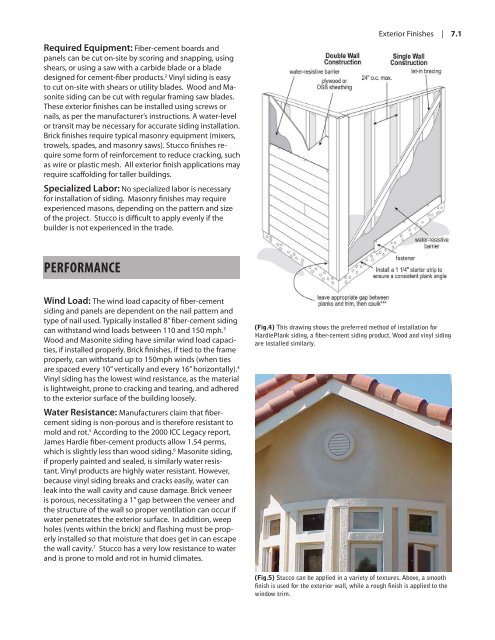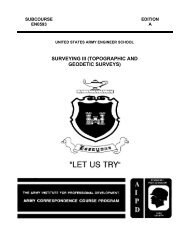Alternative Construction Research Guide - GCCDS
Alternative Construction Research Guide - GCCDS
Alternative Construction Research Guide - GCCDS
You also want an ePaper? Increase the reach of your titles
YUMPU automatically turns print PDFs into web optimized ePapers that Google loves.
Required Equipment: Fiber-cement boards andpanels can be cut on-site by scoring and snapping, usingshears, or using a saw with a carbide blade or a bladedesigned for cement-fiber products. 2 Vinyl siding is easyto cut on-site with shears or utility blades. Wood and Masonitesiding can be cut with regular framing saw blades.These exterior finishes can be installed using screws ornails, as per the manufacturer’s instructions. A water-levelor transit may be necessary for accurate siding installation.Brick finishes require typical masonry equipment (mixers,trowels, spades, and masonry saws). Stucco finishes requiresome form of reinforcement to reduce cracking, suchas wire or plastic mesh. All exterior finish applications mayrequire scaffolding for taller buildings.Specialized Labor: No specialized labor is necessaryfor installation of siding. Masonry finishes may requireexperienced masons, depending on the pattern and sizeof the project. Stucco is difficult to apply evenly if thebuilder is not experienced in the trade.Exterior Finishes | 7.1PERFORMANCEWind Load: The wind load capacity of fiber-cementsiding and panels are dependent on the nail pattern andtype of nail used. Typically installed 8” fiber-cement sidingcan withstand wind loads between 110 and 150 mph. 3Wood and Masonite siding have similar wind load capacities,if installed properly. Brick finishes, if tied to the frameproperly, can withstand up to 150mph winds (when tiesare spaced every 10” vertically and every 16” horizontally). 4Vinyl siding has the lowest wind resistance, as the materialis lightweight, prone to cracking and tearing, and adheredto the exterior surface of the building loosely.Water Resistance: Manufacturers claim that fibercementsiding is non-porous and is therefore resistant tomold and rot. 5 According to the 2000 ICC Legacy report,James Hardie fiber-cement products allow 1.54 perms,which is slightly less than wood siding. 6 Masonite siding,if properly painted and sealed, is similarly water resistant.Vinyl products are highly water resistant. However,because vinyl siding breaks and cracks easily, water canleak into the wall cavity and cause damage. Brick veneeris porous, necessitating a 1” gap between the veneer andthe structure of the wall so proper ventilation can occur ifwater penetrates the exterior surface. In addition, weepholes (vents within the brick) and flashing must be properlyinstalled so that moisture that does get in can escapethe wall cavity. 7 Stucco has a very low resistance to waterand is prone to mold and rot in humid climates.(Fig.4) This drawing shows the preferred method of installation forHardiePlank siding, a fiber-cement siding product. Wood and vinyl sidingare installed similarly.(Fig.5) Stucco can be applied in a variety of textures. Above, a smoothfinish is used for the exterior wall, while a rough finish is applied to thewindow trim.
















